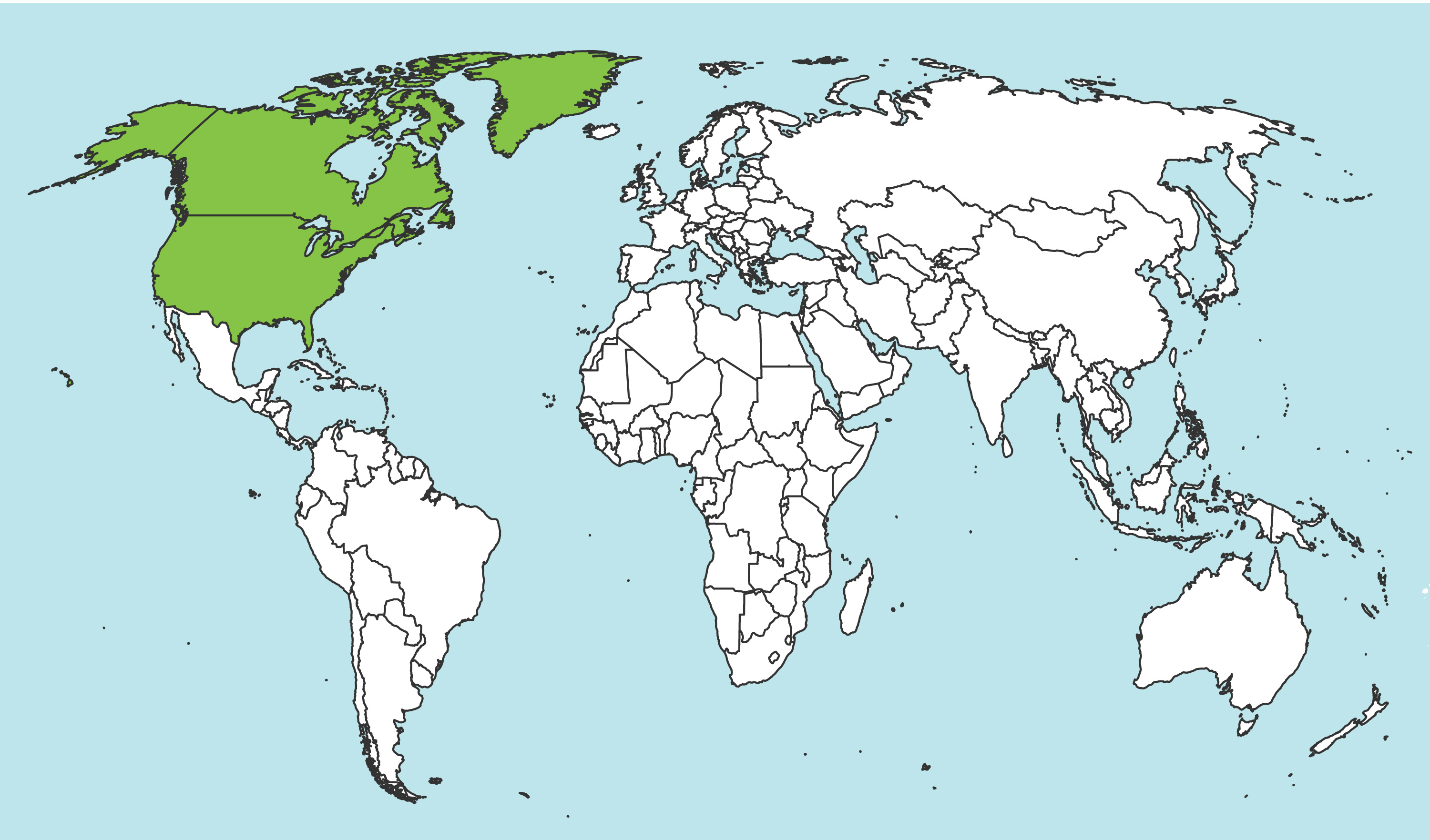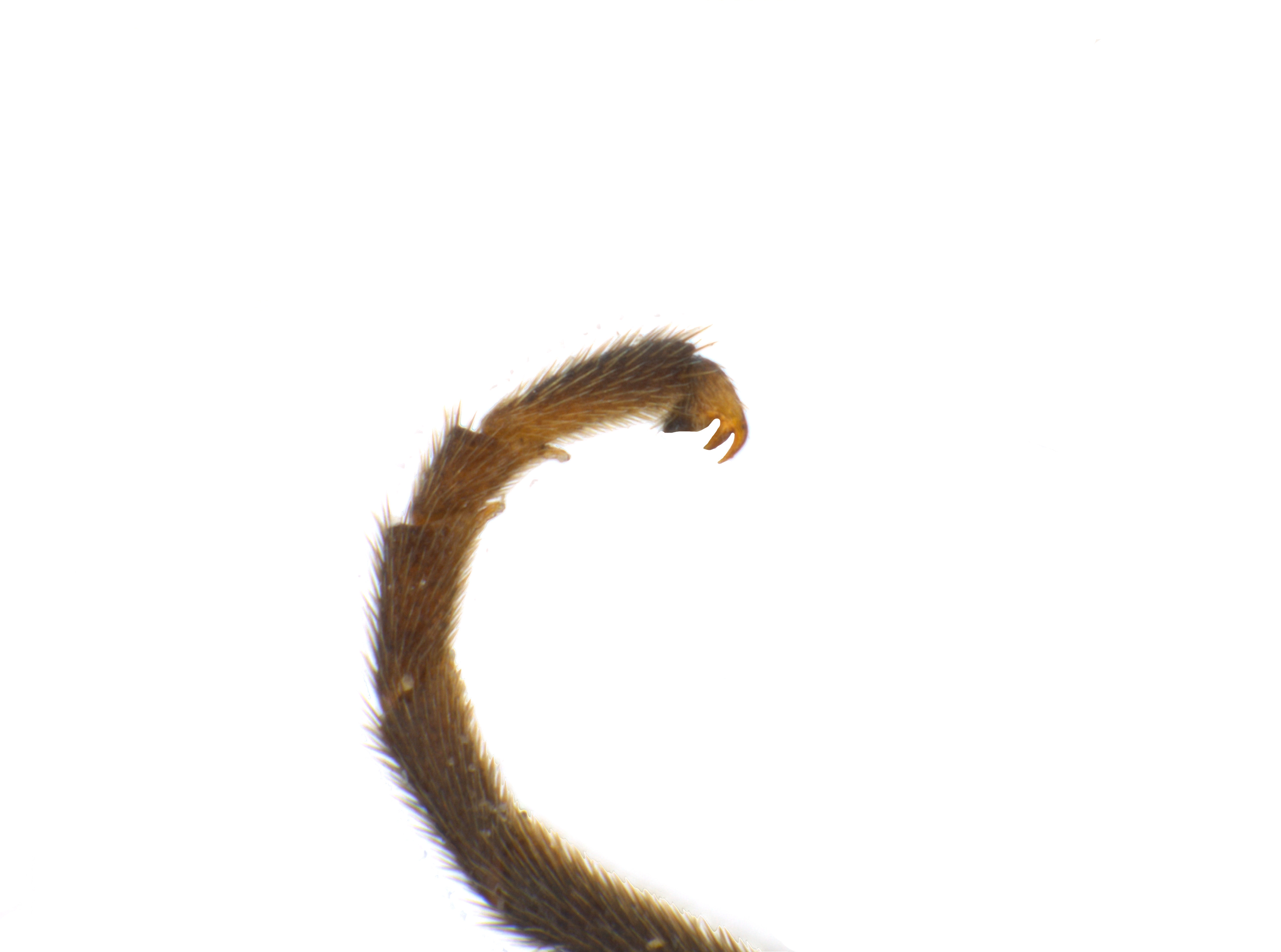Family: Tenthredinidae
Family Common Name: common sawflies
Subfamily: Allantinae
Tribe: Allantini
Genus: Allantus Panzer, 1801
Subgenera: Allantus, Emphytus
The Tenthredinidae are the most species-rich family and are found throughout the world, in all continents but Antarctica. They are known as the “common sawflies.” They can generally be recognized by a cylindrical body and long, segmented antennaeantenna:
the sensory organ emerging from the front of the head, usually between the compound eyes and above the clypeus; includes the flagellum, scape and pedicel
 . Otherwise, they come in a variety of colors, sizes, and forms (Goulet 1992Goulet 1992:
. Otherwise, they come in a variety of colors, sizes, and forms (Goulet 1992Goulet 1992:
Goulet H. 1992. The genera and subgenera of the sawflies of Canada and Alaska: Hymenoptera. Symphyta. The insects and arachnids of Canada. Part 20. Agriculture Canada Publication.).
Sawflies in the Allantinae subfamily are mostly black and shining, sometimes with other colors. They have agricultural importance as some species are pests on cultivated and ornamental plants (Smith 1979aSmith 1979a:
Smith DR. 1979a. Nearctic sawflies. IV. Allantinae: Adults and larvae (Hymenoptera: Tenthredinidae). Technical Bulletin, U.S. Department of Agriculture 1595: 1-172.). They can be distinguished from other subfamilies by wing venationvenation:
the network of veins on a wing
(Smith 2003aSmith 2003a:
Smith DR. 2003a. A Synopsis of the sawflies (Hymenoptera: Symphyta) of America south of the United States: Tenthredinidae (Allantinae). Journal of Hymenoptera Research 12 (1): 148-192.).
Allantus are medium-sized, about 7–8 mm in length, and generally black and white in color. The genus is species-rich worldwide, with a few native and a few introduced species in North America. Some species are known pests of roses (Smith 1979aSmith 1979a:
Smith DR. 1979a. Nearctic sawflies. IV. Allantinae: Adults and larvae (Hymenoptera: Tenthredinidae). Technical Bulletin, U.S. Department of Agriculture 1595: 1-172.).
There are 48 described extantextant:
in existence; opposite of extinct
species worldwide. Nine occur in North America (Taeger et al. 2010Taeger et al. 2010:
Taeger A, Blank SM, and Liston AD. 2010. World Catalog of Symphyta (Hymenoptera). Zootaxa 2580: 1-1064.).
A NearcticNearctic:
describing the region of the Northern Hemisphere that includes North America south through northern Mexico
 key to species is included in Smith 1979aSmith 1979a:
key to species is included in Smith 1979aSmith 1979a:
Smith DR. 1979a. Nearctic sawflies. IV. Allantinae: Adults and larvae (Hymenoptera: Tenthredinidae). Technical Bulletin, U.S. Department of Agriculture 1595: 1-172..
Subfamily characters
 vein M and 1m-cu parallel (Smith 1979aSmith 1979a:
vein M and 1m-cu parallel (Smith 1979aSmith 1979a: vein 2A+3A complete, connected to 1A by crossveincrossvein:
vein 2A+3A complete, connected to 1A by crossveincrossvein:Genus characters
 , right simple (Smith 1979aSmith 1979a:
, right simple (Smith 1979aSmith 1979a: deeply notched; circularly emarginated (Smith 1979aSmith 1979a:
deeply notched; circularly emarginated (Smith 1979aSmith 1979a: vein 2r present (Smith 1979aSmith 1979a:
vein 2r present (Smith 1979aSmith 1979a: vein M intersecting Sc+R at the intersection of Sc+R and Rs+M (Smith 1979aSmith 1979a:
vein M intersecting Sc+R at the intersection of Sc+R and Rs+M (Smith 1979aSmith 1979a: with basalbasal:
with basalbasal:Allantus can be confused with similar species in the subfamily Allantinae or tribe Allantini. It can be distinguished from most other genera by the asymmetrical mandibles, deep circular clypeusclypeus:
sclerotized area on the front of the head located between the antennal insertions and labrum
 emargination, and the lack of cellcell:
emargination, and the lack of cellcell:
1. a membranous area of the wing between veins, 2. a small cavity or closed space
 M in the hind winghind wing:
M in the hind winghind wing:
the posterior wing of each pair of wings
 (Smith 1979aSmith 1979a:
(Smith 1979aSmith 1979a:
Smith DR. 1979a. Nearctic sawflies. IV. Allantinae: Adults and larvae (Hymenoptera: Tenthredinidae). Technical Bulletin, U.S. Department of Agriculture 1595: 1-172.).
Allantus luctifer feeds on species of Rumex (dock) native to east Asia. Dock is a weedy plant considered to be a pernicious and poisonous weed throughout the world, and because of this, A. luctifer was being considered as a potential biocontrol insect in South Korea (Park et al. 2008Park et al. 2008:
Park J, Lee IY, Park JE, and Kwon O. 2008. Allantus luctifer (Hymenoptera: Tenthredinidae), a candidate agent for the biological control of Rumex spp. Entomological Research 38: 221-225. https://doi.org/10.1111/j.1748-5967.2008.00161.x). However, CABI was not able to show sufficient host-specificity, and it was not approved for release in the United States (Grevstad et al. 2018Grevstad et al. 2018:
Grevstad FS, Andreas JE, Bourchier RS, Shaw R, Winston RL, and Randall CB. 2018. Biology and biological control of knotweeds. USDA Forest Service, Forest Health Assessment and Applied Sciences Team, Morgantown, West Virginia. FHTET-2017-03.). Similarly, A. nigrocaeruleus in China was tested for potential use as a biocontrol agent of Polygonum perfoliatum (mile-a-minute), an invasive weed in the eastern United States, but results on host-specificity are incomplete (Ding et al. 2004Ding et al. 2004:
Ding J, Fu W, Reardon R, Wu Y and Zhang G. 2004. Exploratory survey in China for potential insect biocontrol agents of mile-a-minute weed, Polygonum perfoliatum L., in eastern USA. Biological Control 30(2): 487-495.).
In North America, Allantus feeds on species of rose, including Rosa canina (dog rose), Rosa rugosa (saltspray rose), Rosa pendulina (alpine rose), Rosa glauca (red leaf rose), Rosa rugibinosa (sweetbriar rose), Rosa spinosissima (Scotch rose), and Rosa gallica (French rose). Allantus also feeds on species of Rubus (blackberry), Ribes (currant), and Fragaria (strawberry) (Smith 1979aSmith 1979a:
Smith DR. 1979a. Nearctic sawflies. IV. Allantinae: Adults and larvae (Hymenoptera: Tenthredinidae). Technical Bulletin, U.S. Department of Agriculture 1595: 1-172.). One species, Allantus umbonatus is known to feed on the non-Rosaceae tree Betula papyrifera (paper birch) (Wong 1966Wong 1966:
Wong HR. 1966. A new species of Allantus Panzer on Birch (Hymenoptera: Tenthredinidae). The Canadian Entomologist 98(8): 852-854.).
Female Allantus lay eggs into the upper side of the leaf. LarvaeLarva:
the immature stage of holometabolous insects
 feed externally and then overwinter either in stems or in the soil of the host plant. Most species are univoltineunivoltine:
feed externally and then overwinter either in stems or in the soil of the host plant. Most species are univoltineunivoltine:
describing an insect with a life cycle of one generation per year
(Smith 1979aSmith 1979a:
Smith DR. 1979a. Nearctic sawflies. IV. Allantinae: Adults and larvae (Hymenoptera: Tenthredinidae). Technical Bulletin, U.S. Department of Agriculture 1595: 1-172.).
Allantus viennensis is known as the rose minor leaf-eating sawfly and is a pest of roses (Hosseini and Sahragard 2003Hosseini and Sahragard 2003:
Hosseini R and Sahragard A. 2003. Study on the morphological characters and some features of biology and spatial distribution pattern of rose minor leaf eating sawfly, Allantus viennensis (Schr.) (Hym.; Tenthredinidae) in Guilan University. Journal of Agricultural Sciences and Natural Resources 10 (2): 103-115.) (Smith 1979aSmith 1979a:
Smith DR. 1979a. Nearctic sawflies. IV. Allantinae: Adults and larvae (Hymenoptera: Tenthredinidae). Technical Bulletin, U.S. Department of Agriculture 1595: 1-172.). The female lays eggs in young shoots of the plant, and the hatched larvaelarva:
the immature stage of holometabolous insects
 feed gregariously on the parenchymaparenchyma:
feed gregariously on the parenchymaparenchyma:
in plants, the soft, thin-walled, inner tissue that performs functions such as photosynthesis, storage, and secretion; as opposed to dermal and vascular tissues
of the foliage. As they mature, the larvaelarva:
the immature stage of holometabolous insects
 transition to eating the entire leaf and defoliating the plant. LarvaeLarva:
transition to eating the entire leaf and defoliating the plant. LarvaeLarva:
the immature stage of holometabolous insects
 will also feed on flower petals. At maturity, prepupae burrow into stems or shoots and pupate. Allantus viennensis is multivoltinemultivoltine:
will also feed on flower petals. At maturity, prepupae burrow into stems or shoots and pupate. Allantus viennensis is multivoltinemultivoltine:
describing a life cycle with many generations per calendar year
; in studies in Iran it undergoes 3 generations per year (Hosseini and Sahragard 2003Hosseini and Sahragard 2003:
Hosseini R and Sahragard A. 2003. Study on the morphological characters and some features of biology and spatial distribution pattern of rose minor leaf eating sawfly, Allantus viennensis (Schr.) (Hym.; Tenthredinidae) in Guilan University. Journal of Agricultural Sciences and Natural Resources 10 (2): 103-115.).
Allantus cinctus, known as the curled rose sawfly or coiled roseworm, and A. basalis, are also rose pests introduced from Europe (Smith 1979aSmith 1979a:
Smith DR. 1979a. Nearctic sawflies. IV. Allantinae: Adults and larvae (Hymenoptera: Tenthredinidae). Technical Bulletin, U.S. Department of Agriculture 1595: 1-172., Mattson et al. 1994Mattson et al. 1994:
Mattson WJ, Niemela P, Millers I, and Inguanzo Y. 1994. Immigrant phytophagous insects on woody plants in the United States and Canada: an annotated list. US Department of Agriculture Forest Service General Technical Report NC-169., Stroom et al. 1997Stroom et al. 1997:
Stroom K, Fetzer J, and Krischik V. 1997. Insect pest of roses FO-6953-D. University of Minnesota College of Agricultural, food and Environmental Sciences.). Allantus cinctus is bivoltinebivoltine:
describing a life cycle with two generations per calendar year
in the southern part of its range (Smith 1979aSmith 1979a:
Smith DR. 1979a. Nearctic sawflies. IV. Allantinae: Adults and larvae (Hymenoptera: Tenthredinidae). Technical Bulletin, U.S. Department of Agriculture 1595: 1-172.).
Allantus nigritibialis, native to east Asia, was reportedly introduced to eastern North America, but few collections have been made and it is likely there is no population established (Smith 1979aSmith 1979a:
Smith DR. 1979a. Nearctic sawflies. IV. Allantinae: Adults and larvae (Hymenoptera: Tenthredinidae). Technical Bulletin, U.S. Department of Agriculture 1595: 1-172., Taeger et al. 2010Taeger et al. 2010:
Taeger A, Blank SM, and Liston AD. 2010. World Catalog of Symphyta (Hymenoptera). Zootaxa 2580: 1-1064.).
World: This genus is known from North America, Europe, northern Africa, and throughout Asia (Smith 1979aSmith 1979a:
Smith DR. 1979a. Nearctic sawflies. IV. Allantinae: Adults and larvae (Hymenoptera: Tenthredinidae). Technical Bulletin, U.S. Department of Agriculture 1595: 1-172., Taeger et al. 2010Taeger et al. 2010:
Taeger A, Blank SM, and Liston AD. 2010. World Catalog of Symphyta (Hymenoptera). Zootaxa 2580: 1-1064.).
North America: Allantus is widespread in northern United States and Canada and occurs as far north as Alaska and the Northern Territories. There are aberrant collections in Florida and Tennessee (Smith 1979aSmith 1979a:
Smith DR. 1979a. Nearctic sawflies. IV. Allantinae: Adults and larvae (Hymenoptera: Tenthredinidae). Technical Bulletin, U.S. Department of Agriculture 1595: 1-172.).
Map data from: GBIF.org (29 October 2019) GBIF Occurrence Download Allantus
Details about data used for maps can be found here.